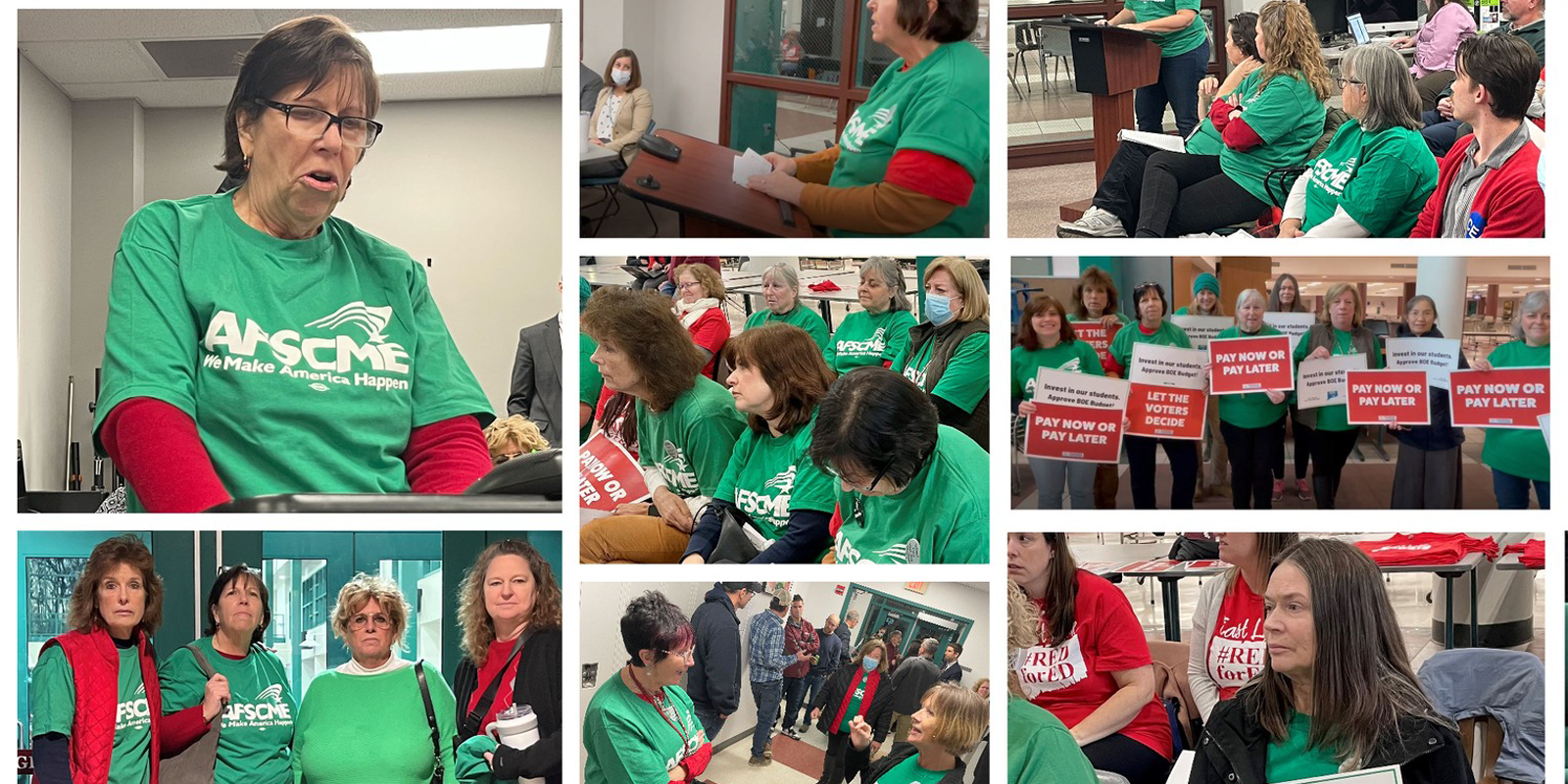Nineteen school workers’ jobs were on the chopping block in East Lyme, Connecticut, but AFSCME members stood in solidarity to save them.
The workers included teachers, paraprofessionals, and secretarial library aides employed at East Lyme’s three elementary schools, the middle school and high school.
According to Patricia Hesney, the president of AFSCME Local 1303-138 (Council 4), which represents East Lyme’s secretaries and library aides, the COVID-19 pandemic, rising health insurance rates and inflation had led East Lyme’s Board of Education to propose cutting the 19 positions.
“Once we found out about the elimination of our union members’ jobs, we collaborated with the teachers’ union (Connecticut Education Association) and the paraprofessionals’ local, AFSCME 1250, and strategized how we could get the board of education to keep those jobs,” said Hesney.
Chris Majchrzak, the president of Local 1250, said, “We became a powerful voice of solidarity – all speaking the same message: every front-line position matters to the educational, social and emotional well-being of our students.”
Their efforts took many months, and included not only the AFSCME locals which represented the workers whose positions were to be cut, but also the invaluable help of other Council 4 members and parents of schoolchildren. They wrote emails, text messages and postcards testifying to the vital role the school staff plays in their kids’ lives.
Together, they brought a show of solidarity to Board of Education meetings. They explained how the school workers, many of them deep into their careers in East Lyme schools, were on the front lines during the pandemic, and delivered the social and emotional support that their kids needed to get through the pandemic.
“We expressed to the board that the students come first – students learning is the most important thing here – and support staff have the day-to-day contact with the students,” said Hesney. “To lose them, especially the ones with the institutional knowledge, would be a huge loss.”
According to Hesney, administrators said they had never seen the three unions come together in such a unified way. Their efforts were a lesson in the power of union solidarity.
Majchrzak recalls, “From that very first meeting we could see that we had a made a huge impact on the board of education, but we also knew this was just the beginning.”
The unions showed up at the board of education meetings bearing their union colors.
“We had on green AFSCME shirts, the teachers’ had red union shirts. We did a big march around where the board of education met before they got started,” recalls Hesney. “They were a little bit shocked. It was a long campaign.”
Majchrzak said, “We looked like a crazy Christmas party.”
A referendum was passed in May, which prevented layoffs, in part due to savings the district found in revised health insurance figures. But it was the show of solidarity among union members that won the day.
“We were thrilled with the outcome,” said Hesney.
In addition to the satisfaction that came with keeping the jobs, Majchrzak said, “It was an incredible feeling to be part of such a unified force and to be union strong!”
